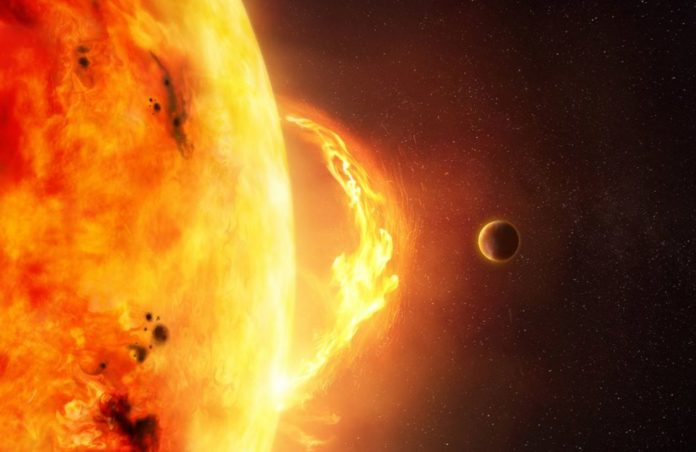The US National Oceanic and Atmospheric Administration warned about the way it could impact, may cause mild disruptions for power grids, as well as impacting the Northern Lights
A solar flare is expected to strike the Earth today, causing minor inconvenience, according to astronomers.
According to a warning issued by the US National Oceanic and Atmospheric Administration’s (NOAA) Space Weather Prediction Center (SWPC), the storm is expected to impact the US about midday – or early evening in the UK / Europe.
“Event analysis and model output suggest CME arrival around midday on 11 October, with lingering effects persisting into 12 October,” NOAA said.
The NOAA estimates that the area most affected by the flare’s influence will be ‘poleward’ of 55 to 65 degrees Geomagnetic Latitude.
The SWPC warns that power grid oscillations may occur, as well as voltage alerts in high-latitude power systems.
Meanwhile, “spacecraft satellite orientation irregularities may occur”.
There may also be “increased drag on low Earth-orbit satellites”.
“High frequency radio propagation can fade at higher latitudes. and the northern lights may be seen may be seen as low as New York to Wisconsin to Washington state.”
Solar flare: what is it?
According to NASA, gases in the sun are continually moving, causing a considerable lot of what is known as ‘solar activity.’
The intensity of activity varies depending on where we are in the solar cycle, which lasts approximately 11 years.
NASA explains: “The magnetic field lines near sunspots often tangle, cross, and reorganise. This can cause a sudden explosion of energy called a solar flare. Solar flares release a lot of radiation into space.
“If a solar flare is very intense, the radiation it releases can interfere with our radio communications here on Earth.”
It has the explosive power of up to 2.5 million nuclear bombs.
How powerful is this solar flare?
Large geomagnetic storms can be extremely detrimental to life on Earth, but this storm is not of that magnitude.
Solar flares are rated from one to five, with five being the strongest. The flare expected later today is more likely to be a ‘G2 solar flare,’ which is defined as moderate in power.
These solar flares are anticipated to occur 600 times per solar cycle.
A G5 solar flare, which occurs approximately four times every 11 years, does not frequently strike the Earth.
The Carrington Event was the biggest solar storm on record to strike the Earth in 1859. A similar strike now would almost certainly result in complete outages of some power grid systems.
Image Credit: Getty
You were reading: A huge solar storm is set to hit Earth later today
